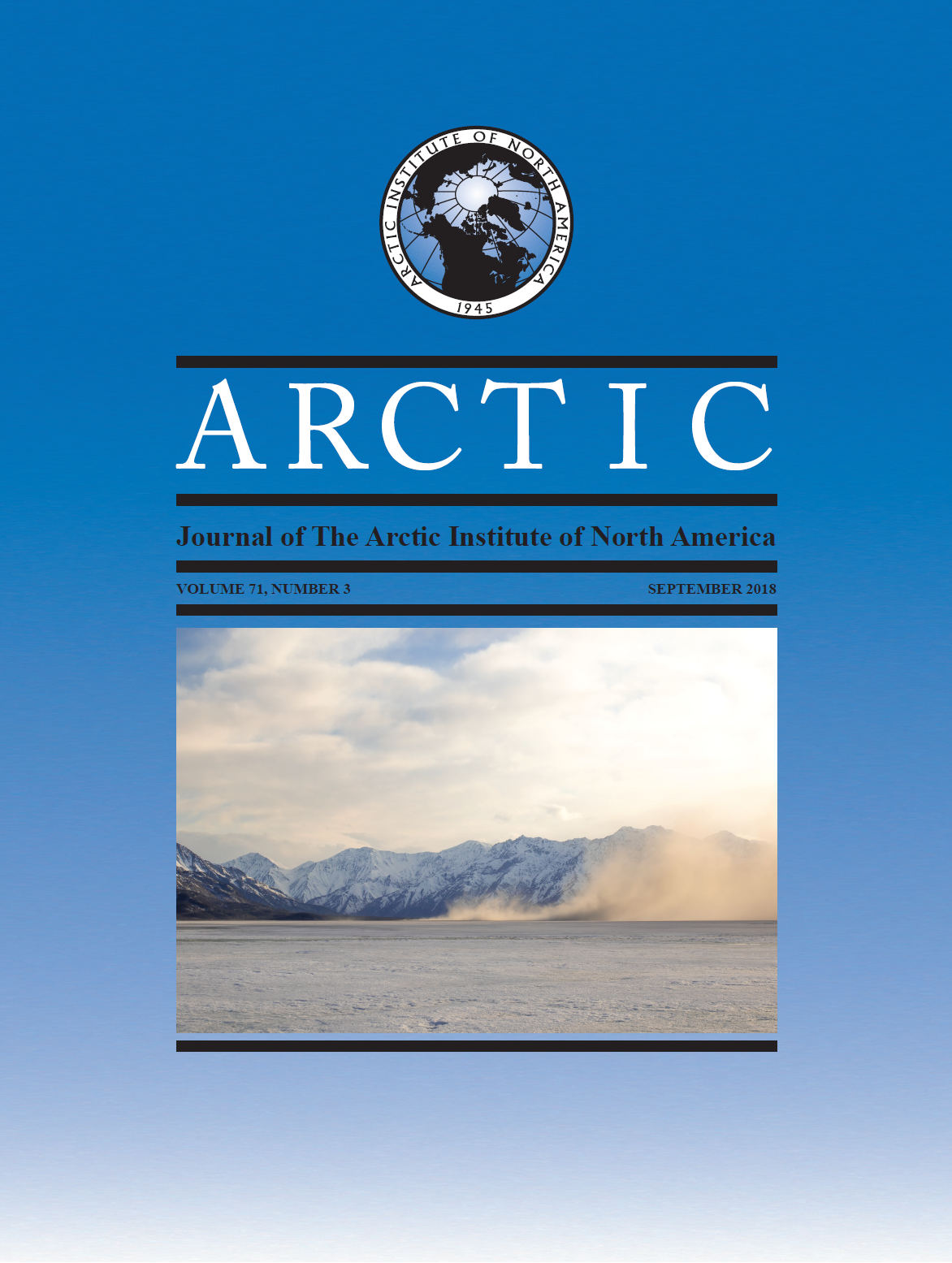Inuit Approaches to Naming and Distinguishing Caribou: Considering Language, Place, and Homeland toward Improved Co-management
DOI :
https://doi.org/10.14430/arctic4734Mots-clés :
caribou, connaissances des Inuit, cogestion, nom des hardes, langue, endroit, patrie, île du Roi-Guillaume (Qikiqtaq), Gjoa Haven (Uqsuqtuuq), Kitikmeot, Kivalliq, NunavutRésumé
Jusqu’à présent, les recherches sur le caribou ont largement fait abstraction de l’île Qikiqtaq (île du Roi-Guillaume), dans la région de Kitikmeot, au Nunavut. La majorité des cartes montrant l’aire de répartition du caribou laissent l’île Qikiqtaq en blanc, ou indiquent que son statut est incertain. Toutefois, notre travail auprès d’aînés et de chasseurs inuits à Uqsuqtuuq (Gjoa Haven) sur la côte sud-est de Qikiqtaq a bien prouvé que les caribous migrent sur l’île et en repartent de façon saisonnière, et que certains restent sur l’île toute l’année. Le caribou a été décrété comme sujet de recherche prioritaire à l’échelle locale en 2010, et de 2011 à 2016, nous avons travaillé en collaboration avec les Uqsuqtuurmiut (le peuple d’Uqsuqtuuq) pour documenter et partager les connaissances des Uqsuqtuurmiut sur les déplacements, la chasse et l’habitat des caribous, ainsi que l’importance du caribou pour le régime alimentaire des gens, les moyens de subsistance et les pratiques culturelles. Dans le cadre de ce processus, il était important de comprendre la terminologie appropriée en inuktitut et les approches locales prises pour nommer et distinguer les espèces de caribous de la région. Les Uqsuqtuurmiut ne distinguent généralement pas le caribou (tuktuit en inuktitut) par hardes, comme le font les biologistes ou les gestionnaires de la faune. À l’échelle locale, les gens distinguent quatre principaux types de caribous : le caribou des terres intérieures (iluiliup tuktuit), le caribou des îles (kingailaup tuktuit), le renne (qungniit) et un mélange d’iluiliup tuktuit et de kingailaup tuktuit. En ayant recours à ces noms, ainsi qu’en revoyant les approches employées pour nommer et distinguer le caribou dans les autres collectivités de Kitikmeot et de Kivalliq, nous mettons l’accent sur la façon dont les relations entre les Inuit et les caribous se manifestent et sont exprimées selon la langue, l’endroit et la patrie. Dans le but d’appuyer l’intégration plus inclusive et significative des connaissances des Inuit aux fins de la cogestion du caribou, nous croyons qu’un examen attentif des approches utilisées par les Inuit pour nommer et distinguer les caribous pourrait faciliter la communication et la compréhension mutuelle. Les principales considérations qui en découlent sont : 1) la prise en compte des différences de dialecte, 2) la compréhension des références géographiques relatives et 3) la reconnaissance des influences historiques et contemporaines des patries et sociétés traditionnelles sur la terminologie employée. Ces considérations ont des répercussions potentielles sur l’identification du caribou et les discussions à leur sujet, ainsi que sur l’établissement d’approches nouvelles et plus perfectionnées pour surveiller les hardes et les habitats de caribous, puisque ces approches sont souvent le résultat de la façon dont les hardes sont définies.


